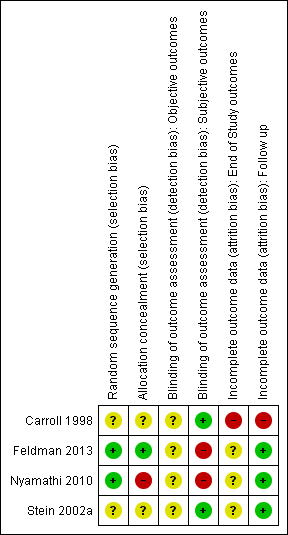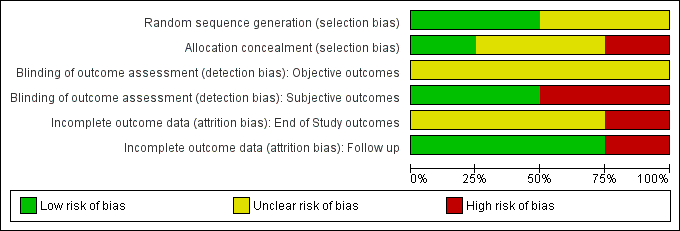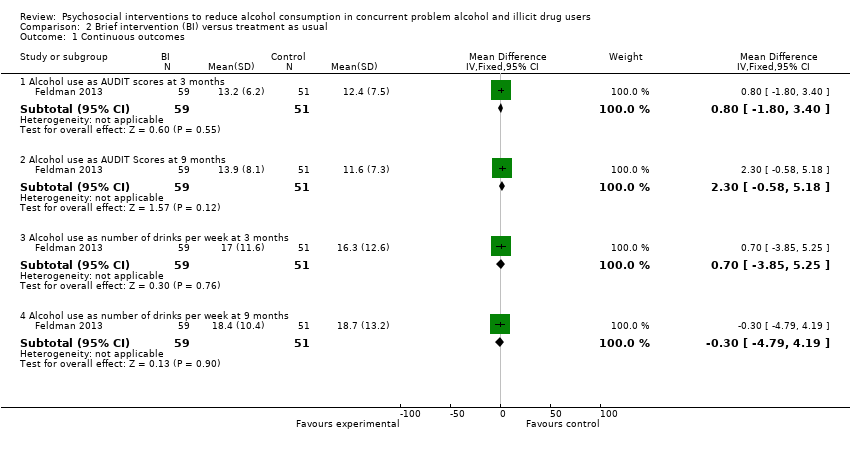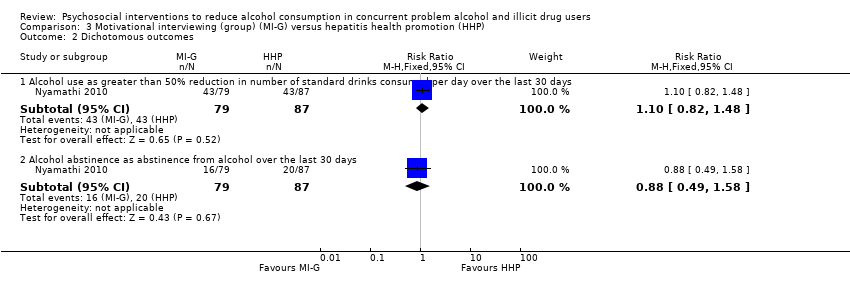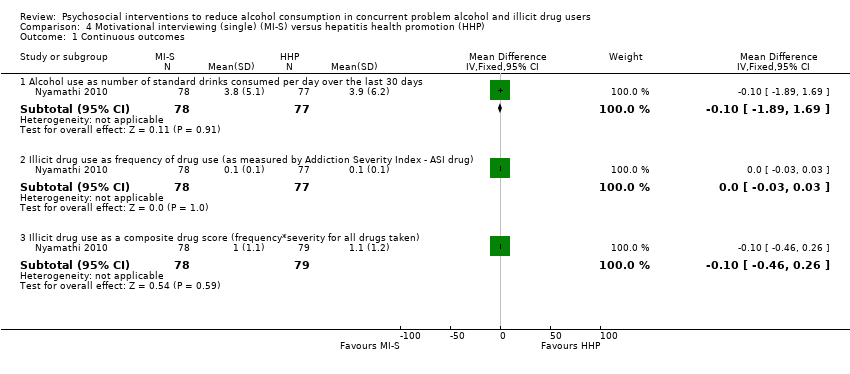Contenido relacionado
Revisiones y protocolos relacionados
Jan Klimas, Christopher Fairgrieve, Helen Tobin, Catherine‐Anne Field, Clodagh SM O'Gorman, Liam G Glynn, Eamon Keenan, Jean Saunders, Gerard Bury, Colum Dunne, Walter Cullen | 5 diciembre 2018
Werner Paulo Knapp, Bernardo GO Soares, Michael F Farrell, Mauricio Silva de Lima | 2 abril 2015
Roger E Thomas, Diane Lorenzetti, Wendy Spragins | 9 noviembre 2011
Mishka Terplan, Shaalini Ramanadhan, Abigail Locke, Nyaradzo Longinaker, Steve Lui | 2 abril 2015
Tara Carney, Bronwyn J Myers, Johann Louw, Charles I Okwundu | 20 enero 2016
Nandi Siegfried, David C Pienaar, John E Ataguba, Jimmy Volmink, Tamara Kredo, Mlenga Jere, Charles DH Parry | 4 noviembre 2014
Pier Paolo Pani, Emanuela Trogu, Simona Vecchi, Laura Amato | 7 diciembre 2011
Ruth McGovern, James J Newham, Michelle T Addison, Matthew Hickman, Eileen FS Kaner | 16 marzo 2021
Intervenciones psicológicas para la depresión coexistente con los trastornos por abuso de sustancias
Leanne Hides, Catherine Quinn, Stoyan Stoyanov, David Kavanagh, Amanda Baker | 26 noviembre 2019
David R Foxcroft, Lindsey Coombes, Sarah Wood, Debby Allen, Nerissa ML Almeida Santimano, Maria Teresa Moreira | 18 julio 2016



